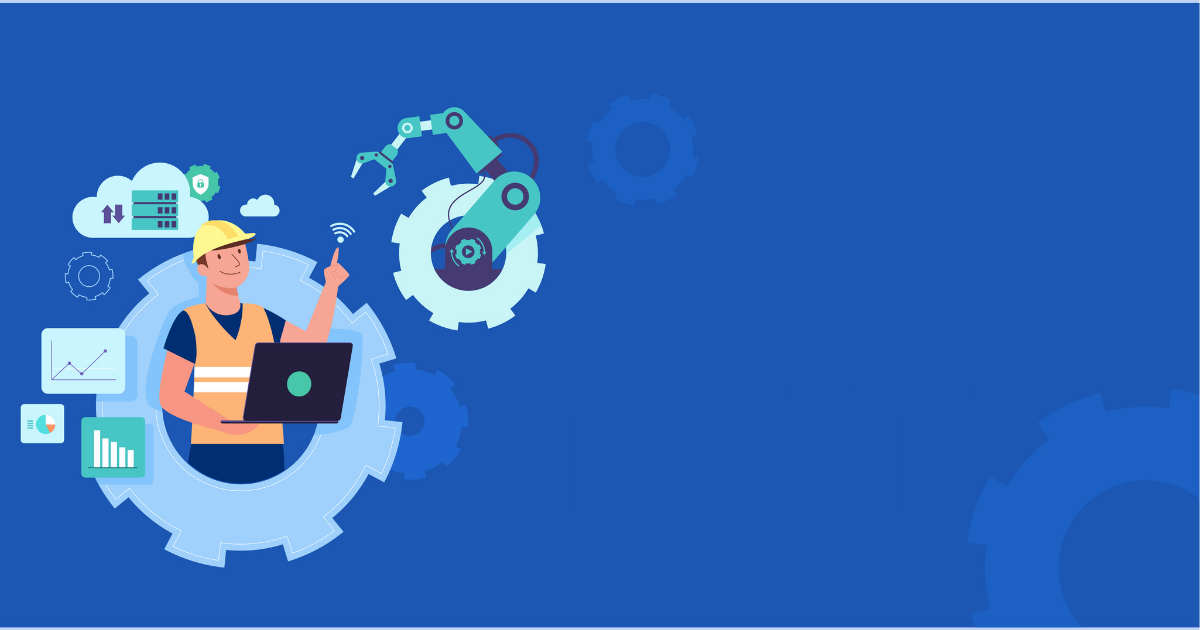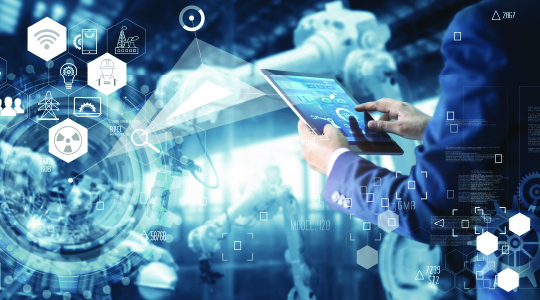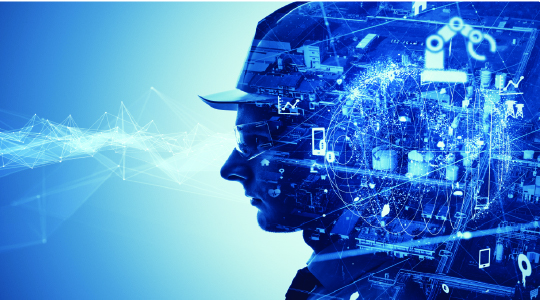A 3-Stage Approach to Industry 4.0 Use Case Realization
The Industry 4.0 revolution is no longer a conceptual or experimental initiative that industrial establishments with deep pockets can try their hands. It is fast becoming a milestone that nearly every manufacturer and industrial business are aiming to achieve in their current operations.
Studies estimate that there will be a USD 267.01 billion worth of market for Industry 4.0 by 2026.
The potential for Industry 4.0 no longer needs an explanation. The real challenge for businesses, however, is in figuring out the right path to realize Industry 4.0 use cases. They are on a quest to discover how their existing operational landscape needs to be transformed to accommodate the pillars of the 4th industrial revolution i.e. Automation, AI, Industrial IoT, and Robotics, etc.
At Delpheon, we are leveraging a 3-stage approach that enable faster industry 4.0 use case realization for enterprises. Let us explore them in detail:
Sense
In the sense stage, enterprises create the foundation over which their Industry 4.0 ecosystem operates. This involves creating the infrastructure to collect data from across production lines, machines, processes, and operations.
Industry 4.0 use cases need truckloads of data to learn and make contextual judgments. This data can be obtained by setting up a network of distributed sensors across the factory floor or operational ecosystem. Embedded within equipment as well as in interaction environments, these sensors will tap into the most granular behavioral changes over time and record them for further processing.
The Sense stage doesn’t stop with just sensing the data. It also involves contributing the data to data lakes or similar enterprise mass data storage mechanisms. The lakes are connected to multiple enterprise systems in use. This will feed in other critical information that when combined with sensor data will reveal actionable insights in the next stage.
Legacy systems in use across hardware and software interfaces have to be augmented with modern digital systems which can seamlessly be governed by data-centric frameworks. Overall, the Sense stage sets the ball rolling by making sure nearly every operational hardware and business information system can generate and supply data streams.
Predict
The next step after data streams are realized and available is to deep dive into the data and uncover hidden behavioral instincts and insights that will facilitate decision making and recommendations for action.
The Predict stage encompasses analytical computing and processing of the data obtained from across the enterprise. Different types of analytics can be performed on the data to generate insights like what happened, what will happen, and the status of pre-defined anomaly conditions and so on.
For example, analytics on machine performance data can help in identifying cycles or work phases where productivity is low. This can further be combined with other relevant operational data to determine the source of anomalies. Once the source is discovered, proper recovery paths can be formulated to help bring their KPIs back on track.
The Predict stage may sound to be just a stage for analytics, but, data analytics for industrial enterprises is a complex endeavor and requires a host of data modeling schemes, infrastructure like an expansive cloud platform to accommodate the massive processing workloads from specialized models and algorithms. The Predict stage creates the data-driven insights that help enterprise leaders to make decisive steps in the path to a sustainable Industry 4.0 application.
Act
The first two stages of the 3-step approach offer enterprises with the right data and insights from the data. The last step now is to leverage these insights and take decisive actions.
In the Act stage, decision-makers across different departments or functional units get a holistic understanding of the insights that were inferred from the data. State-of-the-art reporting and visualization dashboards enable them in finding the right action to be initiated so that the business moves in the right direction and achieves its business goals.
However, in heavily mechanized industries, direct application of recommendations can be tricky. They need to be validated for precise results before being deployed into production. This is where the use of digital twins and models becomes a life-saver for businesses. By modeling a digital twin that simulates the real-world working of an equipment or machine, decision-makers can apply their recommendations and see how the digital model responds to the actions. When the right behavior is noted, the set of actions prescribed can be safely deployed into the actual physical machine.
The actions can be executed either in a fully autonomous way or manually or a combination of both. By virtue of manual and automatic controls, the Act stage realizes the goal of enterprises expected of the Industry 4.0 use case.
The process continues its cycles with data collection, inferring actionable insights and triggering the expected actions. The 3-step framework accelerates your transition with Industry 4.0 capabilities. You need a scalable and secure enablement platform to deploy the three stage framework quickly as well cost effectively. Gadgeon Systems along with its IIoT enablement platform - Delpheon along with its consultancy services will empower and accelerate your Industry 4.0 journey. Book a consultation today to learn more.



